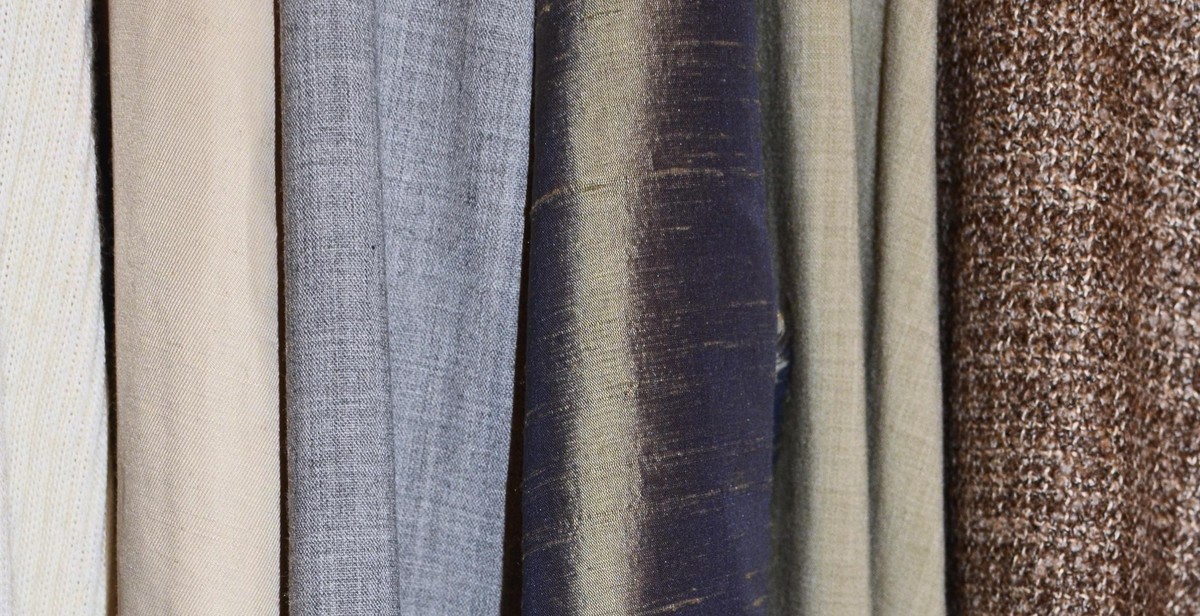How to Choose the Right Hammock Material: Selecting the Best Fabric for Your Needs
As a seasoned hammock enthusiast, I can attest that choosing the right hammock material is crucial for a comfortable and enjoyable outdoor experience. Whether you’re planning to use your hammock for camping, lounging in your backyard, or as a permanent fixture in your home, selecting the best fabric for your needs is essential.
With so many different hammock materials available, it can be overwhelming to decide which one to choose. Factors such as durability, comfort, and weather resistance should all be taken into consideration when making your decision. Additionally, different materials have different weight capacities and require different levels of maintenance.
In this article, we’ll explore the most common hammock materials and their pros and cons, so you can make an informed decision when choosing the right hammock material for your needs. Whether you’re a seasoned hammock enthusiast or a beginner, this guide will provide you with the information you need to select the best fabric for your hammock.

Types of Hammock Materials
Cotton Hammocks
Cotton is a popular hammock material due to its softness and breathability. It is comfortable to lay on and does not cause skin irritation. Cotton hammocks are also easy to clean and can be machine washed. However, cotton hammocks are not the most durable and may not hold up well in extreme weather conditions. They also tend to stretch over time, which may affect comfort levels.
Polyester Hammocks
Polyester is a synthetic material that is known for its durability and resistance to weather elements. It is also resistant to mold and mildew, making it a good choice for outdoor use. Polyester hammocks are relatively easy to maintain and can be machine washed. However, they may not be as comfortable as cotton hammocks due to their rough texture.
Nylon Hammocks
Nylon is a lightweight and durable material that is commonly used for camping hammocks. It is resistant to water and can dry quickly, making it suitable for outdoor use. Nylon hammocks are also easy to pack and transport, making them a popular choice for backpackers and hikers. However, nylon hammocks may not be as comfortable as cotton or polyester hammocks due to their thin material.
Sunbrella Hammocks
Sunbrella is a high-quality fabric that is commonly used for outdoor furniture. It is known for its resistance to fading, stains, and weather elements. Sunbrella hammocks are comfortable to lay on and can withstand harsh weather conditions without losing their color or shape. They are also easy to clean and maintain. However, Sunbrella hammocks may be more expensive than other types of hammocks due to their high-quality material.
| Material | Pros | Cons |
|---|---|---|
| Cotton | Soft, breathable, easy to clean | Not as durable, stretches over time |
| Polyester | Durable, resistant to weather elements, easy to maintain | Rough texture, not as comfortable as cotton |
| Nylon | Lightweight, durable, resistant to water | Thin material, not as comfortable as cotton or polyester |
| Sunbrella | High-quality, resistant to fading and stains, comfortable | More expensive than other materials |

Factors to Consider When Choosing a Hammock Material
When it comes to choosing the right hammock material, there are several factors to consider. Below are some of the most important factors to keep in mind:
Durability
One of the most important factors to consider when choosing a hammock material is durability. You want a material that can withstand regular use without showing signs of wear and tear. Some of the most durable materials for hammocks include polyester, nylon, and Sunbrella fabric.
Polyester is a synthetic fabric that is known for its strength and durability. It is resistant to mildew and fading, making it an excellent choice for outdoor use. Nylon is another synthetic fabric that is lightweight, strong, and durable. It is also quick-drying, which is ideal for humid or wet climates. Sunbrella fabric is a high-performance fabric that is known for its durability and resistance to fading and mildew. It is also easy to clean and maintain.
Comfort
Another important factor to consider when choosing a hammock material is comfort. You want a material that is soft and comfortable to lie on, especially if you plan on using your hammock for extended periods. Some of the most comfortable materials for hammocks include cotton, silk, and quilted fabric.
Cotton is a natural fabric that is soft, breathable, and comfortable. It is also easy to wash and maintain. Silk is another natural fabric that is soft and comfortable. It is also lightweight and easy to pack, making it a great choice for camping or travel. Quilted fabric is a combination of cotton and polyester that is soft and comfortable. It is also padded, which provides extra cushioning and support.
Weather Resistance
When choosing a hammock material, you also want to consider its weather resistance. If you plan on using your hammock outdoors, you want a material that can withstand the elements. Some of the most weather-resistant materials for hammocks include polyester, nylon, and Sunbrella fabric.
Polyester and nylon are both synthetic fabrics that are resistant to water and mildew. They are also quick-drying, which is ideal for humid or wet climates. Sunbrella fabric is a high-performance fabric that is resistant to fading, mildew, and water. It is also UV-resistant, which is essential for protecting your hammock from the sun’s harmful rays.
Maintenance
Finally, you want to consider the maintenance required for your hammock material. Some materials are easier to clean and maintain than others. For example, cotton and quilted fabric are easy to wash and maintain. On the other hand, Sunbrella fabric requires special cleaning instructions to maintain its durability and weather resistance.
When choosing a hammock material, consider how much maintenance you are willing to put in to keep it in good condition. If you want a low-maintenance option, polyester and nylon are great choices. If you don’t mind a little extra maintenance, cotton and quilted fabric are comfortable and easy to clean.
| Factor | Materials |
|---|---|
| Durability | Polyester, Nylon, Sunbrella fabric |
| Comfort | Cotton, Silk, Quilted fabric |
| Weather Resistance | Polyester, Nylon, Sunbrella fabric |
| Maintenance | Cotton, Quilted fabric – Easy maintenance; Sunbrella fabric – Special cleaning instructions required |

How to Choose the Right Hammock Material: Selecting the Best Fabric for Your Needs
Hammocks are a great way to relax and enjoy the outdoors. Choosing the right hammock material is an important decision that will determine your comfort, durability, and overall enjoyment. Here are some factors to consider when selecting the best fabric for your needs.
Consider Your Environment
The environment in which you plan to use your hammock is an important factor to consider when choosing the right material. If you plan to use your hammock outdoors, you need a material that can withstand the elements. Consider the climate, the amount of sun exposure, and the likelihood of rain or moisture. If you plan to use your hammock indoors, you have more options in terms of fabric type and weight.
Think About Your Desired Comfort Level
The level of comfort you desire is another important factor to consider. If you want a soft and luxurious feel, cotton is a good option. However, if you want a more sturdy and supportive hammock, nylon or polyester may be a better choice. Keep in mind that the material you choose will affect the overall feel of the hammock.
Determine Your Budget
The cost of your hammock material is another important consideration. Cotton hammocks tend to be more affordable than nylon or polyester. However, they may not be as durable or long-lasting. Consider your budget and how much you are willing to spend on a hammock before making a decision.
Consider the Maintenance Required
The maintenance required for your hammock material is also an important consideration. Cotton hammocks are easy to clean, but they may require more frequent washing. Nylon and polyester hammocks are more durable and require less maintenance, but may be more difficult to clean.
| Material | Pros | Cons |
|---|---|---|
| Cotton | Soft and comfortable, affordable | Less durable, may require more maintenance |
| Nylon | Durable, water-resistant, easy to clean | May not be as comfortable, more expensive |
| Polyester | Durable, weather-resistant, easy to clean | May not be as comfortable, more expensive |
- Consider the environment in which you plan to use your hammock
- Think about your desired comfort level
- Determine your budget
- Consider the maintenance required
By considering these factors, you can choose the right hammock material that will provide you with comfort, durability, and overall enjoyment for years to come.
Conclusion
Choosing the right hammock material is crucial to ensure a comfortable and enjoyable outdoor experience. With so many options available, it can be overwhelming to make a decision. However, by considering your needs and preferences, you can narrow down your choices and select the best fabric for your hammock.
Final Thoughts
Personally, I have had the pleasure of testing out various hammock materials during my outdoor adventures. From my experience, I highly recommend nylon and polyester fabrics for their durability, resistance to weather elements, and ease of maintenance. However, if you prefer a more natural and eco-friendly option, cotton and canvas materials are also great choices.
Remember to also consider the weight capacity, breathability, and insulation properties of the fabric before making a purchase. By doing so, you can ensure that your hammock will provide you with the comfort and support you need.
- Assess your needs and preferences
- Consider the durability and weather resistance of the fabric
- Choose a material that provides the right level of comfort and support
- Factor in the weight capacity, breathability, and insulation properties of the fabric
With these tips in mind, you can confidently choose the right hammock material for your needs and enjoy the great outdoors in comfort and style.
